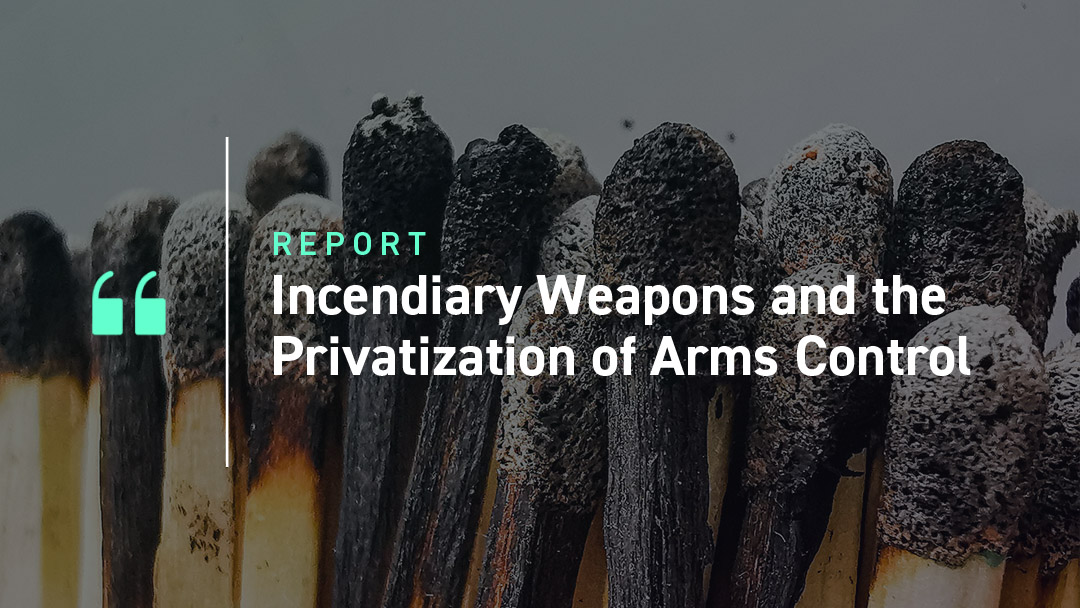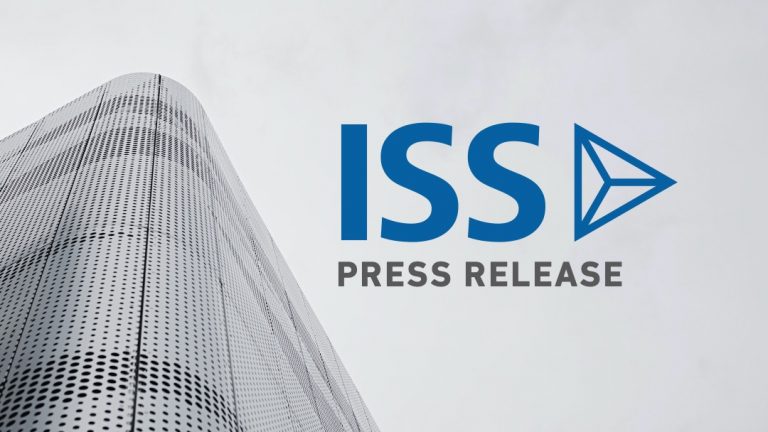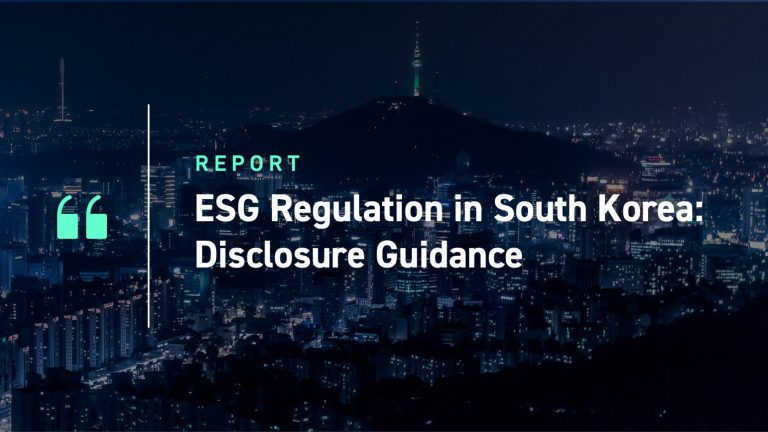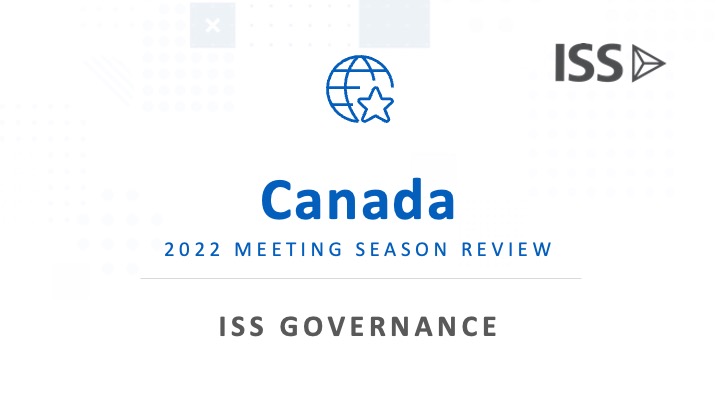Incendiary weapons such as napalm or thermite bombs are not prohibited by international arms control instruments per se – as opposed to anti-personnel mines, biological and chemical weapons, and cluster munitions. Nevertheless, due to the severe humanitarian risks associated with the deployment of incendiary weapons their use is limited to clearly defined military targets by Protocol III of the Convention on Certain Conventional Weapons (CCW). The CCW is an arms control framework originally adopted within the United Nations (UN) in 1980. The effectiveness of Protocol III in adequately addressing human suffering caused by incendiary weapons has been questioned by various countries and NGOs, however.
At the same time as an increasing number of investors (see below) restrict finance for companies involved in incendiary and white phosphorus weapons due to their indiscriminate effects and the disproportionate harm, superfluous injury, or unnecessary suffering they can cause, major players in the defence industry are also ending their involvement in these weapons, or announcing commitments to do so in the near future.
Legislative loopholes?
Ahead of a December 2021 CCW Review Conference, several NGOs such as the International Committee of the Red Cross (ICRC) and Human Rights Watch (HRW) raised concerns regarding the effectiveness of Protocol III. For instance, in its recommendation for the conference the ICRC stated that:
‘Protocol III excludes weapons that may have “incidental” incendiary effects, such as flares, tracers and smoke and signalling systems. As a result, many weapons with incendiary effects are not covered by the Protocol’s restrictions because their effects can be characterized as incidental to the munitions’ main purpose.’
The organization recommended the CCW’s:
‘High Contracting Parties … hold a dedicated discussion on the implementation of Protocol III at the Review Conference and consider future work to examine the military, technical, legal, humanitarian and environmental aspects of incendiary weapons and weapons with incidental incendiary effects.’
Also in December 2021, Dutch peace organization PAX released a publication on incendiary weapons. While nearly all countries in the world are bound by the provisions of CCW Protocol III, in its report PAX highlights two significant loopholes of this arms control instrument:
‘First, the current definition in Article 1 of the protocol does not cover multipurpose munitions, such as white phosphorus. The definition is based on the purpose for which the weapons were “primarily designed”, namely “to set fire to objects or cause burn injury to persons…”, rather than on their effects. This definition excludes, for example, white phosphorus, which is primarily designed to create a smokescreen yet inflicts particularly deep burns and can reignite when in touch with oxygen. Whether a certain munition falls outside the scope of the protocol’s regulations may depend on the description of its purpose provided by the producer, manufacturer and/or user, rather than on its effects. Second, Article 2 prohibits the use of air-delivered incendiary weapons on concentrations of civilians, but has weaker regulations for ground-launched models. The protocol allows groundlaunched attacks when “the military objective is clearly separated from the concentration of civilians” and “all feasible precautions are taken” to minimize impact on civilians. Evidence indicates however that both air-delivered and ground-launched incendiary weapons cause grave civilian harm. The distinction between modes of delivery therefore makes the protocol inconsistent and incapable of providing sufficient protection to civilians.’
Due to the allegedly inadequate protection of civilians and civilian infrastructure provided by the provisions of CCW Protocol III, the publication called on states to close the above loopholes, and to strengthen international arms control instruments addressing humanitarian concerns related to incendiary weapons. It was suggested that this could be achieved outside the CCW if no progress could be achieved within the framework treaty.
However, not all CCW states parties agreed with the various NGOs’ recommendations to review Protocol III. After the review conference, HRW summarized the High Contracting Parties’s discussions as follows:
‘The CCW, unlike some disarmament forums, operates by consensus, which allows a single country to block a proposal. […] Twenty countries called for dedicated discussions to review the protocol in light of the grievous humanitarian consequences of using these weapons. Russia and Cuba, however, blocked Ireland’s widely supported proposal for holding informal consultations on Protocol III next year. While the Review Conference agreed to condemn the use of incendiary weapons against civilians, the failure to approve focused discussions on the effectiveness of the existing protocol was discouraging […]. Ireland said that consensus has been used to hand “the power of veto to a small number of states, which is deeply concerning.”’
Why is this relevant for investors?
The above-mentioned report by PAX, titled ‘Put Out the Fire. Strengthening International Law and Divestment Policies on Incendiary Weapons’, aims to link ‘the human cost of incendiary weapons, international law, key producers, and divestment policies of financial institutions.’ The publication lists 10 companies as producers of incendiary weapons, mainly due to involvement in white phosphorus weapons, as opposed to incendiary weapons that would fall under the category of weapons regulated under CCW Protocol III. The NGO also acknowledges the limitations of its analysis, however:
‘This paper is not meant to provide an exhaustive overview of all companies that are involved in the production of incendiary or multipurpose munitions, nor does it provide a complete list of all financial institutions that have divested from these weapons. Instead, we have created two shortlists based on geographical diversity and prominence to create an image of current types of incendiary weapons and how the financial sector deals with the issue.’
| Defence Companies Are Taking Action: There are indications that major players in the defence industry are seeking to address humanitarian concerns regarding incendiary weapons. For example, two of the companies listed in the PAX report, BAE Systems Plc and Thales SA, have announced efforts to end their involvement in white phosphorus weapons. Thales currently includes the following commitment among its CSR principles: ‘International treaties do not ban the use of white phosphorus in weapons. Yet this substance is often categorised as a controversial weapon by NGOs and financial institutions because of its characteristics and the danger it poses. Thales does not produce incendiary weapons. We only use white phosphorus to make smoke-screen equipment, which acts as a protective agent for soldiers. This activity is extremely marginal, since it generated no revenue in 2019 and 2020. Thales is, however, aware of the controversies surrounding this substance. In 2018, we launched a substitution programme to develop a new generation of phosphorus-free smoke products. And even though this programme is ongoing, we have pledged to stop producing and selling materials containing white phosphorus by June 2022 at the latest.’ In October 2021 BAE Systems stated in an ESG presentation for investors that it is ‘Committed to cease handling white phosphorous’, adding the following: ‘BAE Systems does not manufacture white phosphorous. However, we do supply certain mortars for obscuration only to the UK Ministry of Defence that contain white phosphorous. […] We have communicated our intention to cease the supply of the product containing White Phosphorus to our customers and are actively working with them on alternative solutions and exploring timelines for withdrawal.’ In a November 2021 Market update the company reiterated that it is ‘Committed to cease handling white phosphorus’. In recent years other producers of white phosphorus munitions, such as Rheinmetall AG and Singapore Technologies Engineering Ltd, have also announced the end of their involvement in these types of weapons. Corporate involvement in incendiary and white phosphorus weapons is analyzed by ISS ESG using its established Controversial Weapons Research methodology. |
The PAX report also analyzes ‘Financial Institutions Excluding Incendiary Weapons from their Portfolio’, stating the following concerning its findings:
‘A scan through the divestment policies of financial institutions known for excluding controversial weapons from their portfolios shows that many financial institutions have excluded producers of incendiary weapons or white phosphorus for years. Financial institutions often base their exclusion on research conducted by a research provider. Because of the influence these research providers have on the actual exclusion lists of financial institutions, it is interesting to look at the way such research providers consider producers of incendiary weapons and white phosphorus.’
The NGO further analyzes research providers such as ISS ESG and concludes the following:
‘While the research providers discussed above approach incendiary weapons and white phosphorus somewhat differently, they all classify these weapons as controversial ones that investment portfolios should be screened for.’
The latter part of this conclusion is not entirely accurate, however. The mere inclusion by research providers of certain types of weapons, such as incendiary and white phosphorus weapons, among those that can be considered controversial should not necessarily be understood as a recommendation that investors have their investment portfolios screened for companies involved in such weapons. Ultimately it is up to individual financial institutions how they utilize this information in the implementation of their respective group-wide or product-specific investment policies.
The below chart shows the share of assessments for corporate involvement covered by ISS ESG’s Controversial Weapons Research per weapon type. While white phosphorus weapons have the third largest number of assessments, with an approximate share of 7.3% of all assessments in Controversial Weapons Research, the total number of assessments for incendiary weapons is only three (0.5%). The latter is a consequence of the narrow technical definition of incendiary weapons in CCW Protocol III, and may also be due to the comparably limited range of CCW-compliant operational military requirements for these types of weapons, such as safely destroying biological or chemical weapons facilities as exemplified by the 2007-patented Kinetic fireball incendiary munition:
‘Advanced munitions are being developed to penetrate and defeat this range of facility targets. However, novel payloads for these munitions are also required to confidently defeat these facilities without releasing and dispersing the very biological and chemical weapons sought to be destroyed. At present, no conventional munitions achieve such object. In particular, payloads of incendiary munitions capable of raising internal facility room temperatures uniformly to well over 1,000° F. in a non-explosive manner for an extended period of time are needed to neutralize biological and chemical weapons contained in munitions and other storage vessels, and to minimize collateral effects.’
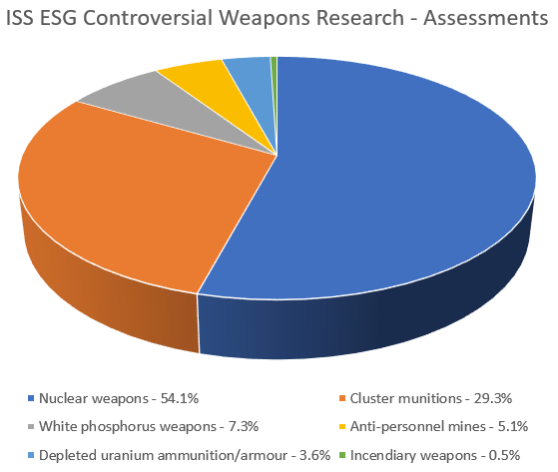
Source: ISS ESG data for publicly traded companies. Assessments of corporate involvement cover a range of involvement types such as past involvement, indications of involvement and verified involvement; multiple assessments per company and per weapon type are possible
Given the apparent lack of willingness to improve the effectiveness of Protocol III demonstrated by various High Contracting Parties at the recent review conference, efforts to mitigate humanitarian risks associated with incendiary weapons – including white phosphorus munitions – outside of the CCW framework are likely to gain further importance. Investors can support these efforts by raising their concerns and engaging in dialogue with respective stakeholders in the defence industry and civil society.
Moreover, dialogue between these stakeholders and national governments as well as inter-governmental organizations may be required to work towards a regulatory level playing field internationally. This may help to incentivize key players and create the momentum needed to establish a process aimed at an arms control instrument that effectively regulates incendiary weapons and fosters the protection of human rights.
Explore ISS ESG solutions mentioned in this report:
- Use ISS ESG Controversial Weapons Research to assesses companies’ involvement in banned or controversial weapons.
By Henning Weber, Head of Weapons Research, ISS ESG Lawrence Dermody, Senior Analyst, ISS ESG
